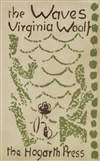The Waves
- 中文名:
- 海浪
- 类型:
- 小说经典
- 可下载格式:
- 收藏和分享海浪:
- 海浪(The Waves)简介:
The Waves, first published in 1931, is Virginia Woolf's most experimental novel. It consists of soliloquies spoken by the book's six characters: Bernard, Susan, Rhoda, Neville, Jinny, and Louis. Also important is Percival, the seventh character, though readers never hear him speak through his own voice. The monologues that span the characters' lives are broken up by nine brief third-person interludes detailing a coastal scene at varying stages in a day from sunrise to sunset.
As the six characters or "voices" alternately speak, Woolf explores concepts of individuality, self, and community. Each character is distinct, yet together they compose a gestalt about a silent central consciousness. Bernard is a story-teller, always seeking some elusive and apt phrase (some critics see Woolf's friend E. M. Forster as an inspiration); Louis is an outsider, who seeks acceptance and success (some critics see aspects of T. S. Eliot, whom Woolf knew well, in Louis); Neville (who may be partially based on another of Woolf's friends, Lytton Strachey) desires love, seeking out a series of men, each of whom become the present object of his transcendent love; Jinny is a socialite, whose Weltanschauung corresponds to her physical, corporeal beauty; Susan flees the city, in preference for the countryside, where she grapples with the thrills and doubts of motherhood; and Rhoda is riddled with self-doubt and anxiety, always rejecting and indicting human compromise, always seeking out solitude (as such, Rhoda echoes Shelley's poem "The Question"; paraphrased: I shall gather my flowers and present them--O! to whom?). Percival (partially based on Woolf's brother, Thoby Stephen) is the god-like but morally flawed hero of the other six, who dies midway through the novel on an imperialist quest in British-dominated colonial India. Although Percival never speaks through a monologue of his own in The Waves, readers learn about him in detail as the other six characters repeatedly describe and reflect on him throughout the book.
Similar in style to another modernist work, James Joyce's A Portrait of the Artist as a Young Man, the novel follows its six narrators from childhood through adulthood. While Joyce's novel could be considered a Bildungsroman, Woolf's novel is more concerned with the individual consciousness and the ways in which multiple consciousnesses can weave together. The difficulty of assigning genre to this novel is complicated by the fact that The Waves blurs distinctions between prose and poetry, allowing the novel to flow between six not dissimilar interior monologues. The book similarly breaks down boundaries between people, and Woolf herself wrote in her Diary that the six were not meant to be separate "characters" at all, but rather facets of consciousness illuminating a sense of continuity. Even the name "novel" may not accurately describe the complex form of The Waves. Woolf herself called it not a novel but a "playpoem."
Marguerite Yourcenar translated The Waves over a 10-month period in 1937. Of Woolf whom she met at that time in Bloomsbury, Yourcenar had this to say: "I do not believe I am committing an error, however, when I put Virginia Woolf among the four or five great virtuosos of the English language and among the rare contemporary novelists whose work stands some chance of lasting more than ten years."
The 21st Century author and critic Becky Nordensten has described The Waves as a "beautiful novel with language and imagery unmatched in 20th Century English literature."
弗吉尼亚·伍尔芙的作品
相关书籍
- 《年轻夫妇素描》Sketches of Young Couples [PDF]
- 《安伯森情史》The Magnificent Ambersons [PDF]
- 《乔治·梅瑞狄斯诗集第一卷》Poems by George Meredith - Volume 1 [PDF TXT]
- 《失落的史特拉第瓦里》The Lost Stradivarius [PDF]
- 《追忆似水年华第三部:盖尔芒特家那边》In Search of Lost Time, Vol. III: The Guermantes Way [PDF]
- 《西特拉》Chitra, A Play in One Act [PDF]
- 《歌德诗集》The Poems of Goethe [PDF TXT]
- 《德里克·凡更》Derrick Vaughan Novelist [PDF]
- 《阿富特房子》The After House [PDF]
- 《欧也妮·葛朗台》Eugénie Grandet [PDF TXT]
赞助商
